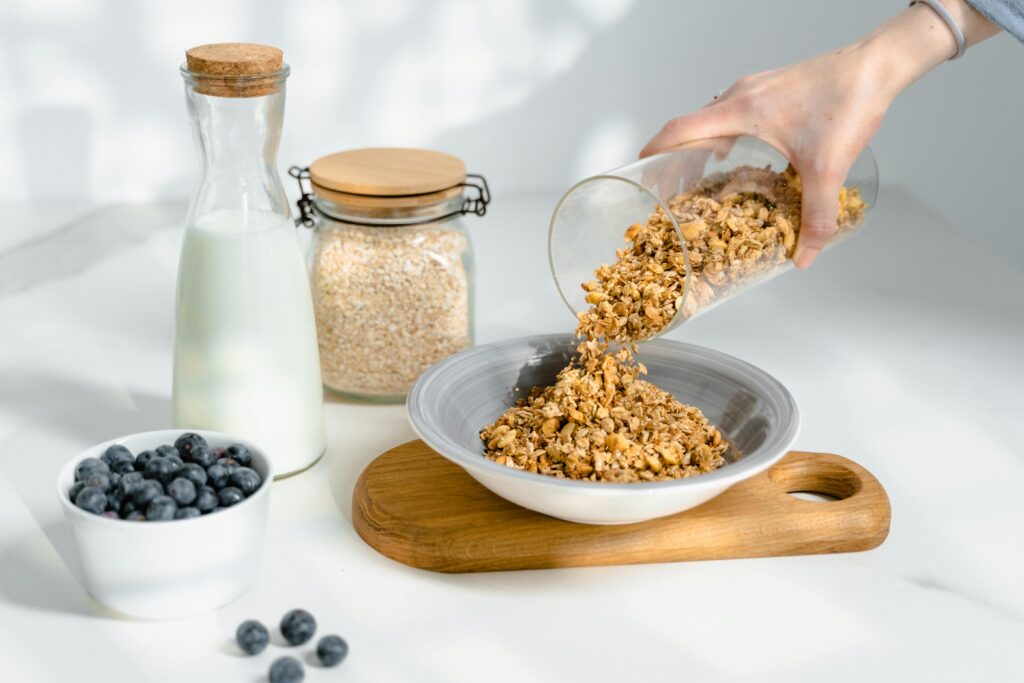Let’s Talk About the Plant Milk Craze
You’ve seen them everywhere – cartons of almond milk v coconut milk lining grocery store fridges. Maybe you’re ditching dairy, maybe you’re just curious. Either way, choosing between these two popular plant milks can feel like a guessing game. Things that look similar in package are different when it comes to how they add to your glass, coffee and food. Let me break them down to you in plain English, so that you are not confused about getting your perfect pour ever again.

Getting to Know Almond Milk
What is almond milk then really? Imagine it in this way: they put almonds, mix them with lots of water, and then filter everything out. It leaves a rather nutty-flavored light liquid. It’s naturally pretty low in calories and sugar, which is a big win for lots of folks. Because it’s so light on its almond milk v coconut milk own, many brands you buy pump it up with added vitamins and minerals – things like calcium and vitamin D, to make it more like cow’s milk nutrition-wise. Grab an unsweetened carton, and you’re looking at maybe 30 calories a cup. It blends quietly into smoothies or coffee without shouting “HEY, I’M HERE!” But, that lightness means it might not give you the creamy mouthfeel you’re used to. Watch out for flavored kinds though – they can sneak in quite a bit of sugar.
Understanding Coconut Milk
Coconut milk can be confusing. We’re not talking about the super thick stuff in the can that you make curries with. When you want to drink it and pour over cereal, you want the “coconut milk beverage” in the carton. It is prepared by mixing coconut cream or coconut water with ordinary water to form a more liquid type that is easy to drink. It has a distinct almond milk v coconut milk flavour which is sweet, tropical and silky in your mouth compared to almond milk. This richness comes from its natural fats, including some interesting types called MCTs. Like almond milk, the carton kind is often fortified with vitamins. Calorie-wise? Usually between 45 and 80 per cup, depending on how much fat they leave in.
Putting Them Head-to-Head Nutrition Smackdown
Nutritionally, almond milk and coconut milk are playing different sports. Almond milk (unsweetened) is the champ if you’re counting calories or carbs – super low on both. But protein? Forget about it. You might get 1 measly gram per cup, unless it’s specially added. Coconut milk brings more saturated fat to the table – around 5 grams per cup versus almond milk’s 2.5 grams. But here’s the thing: this fat comes mostly from those plant-based MCTs, which your body might handle differently than the fat in a cheeseburger. Almond milk often packs more calcium and vitamin E, while coconut milk might give you a bit more iron. Both of them will not be your primary source of proteins such as soy milk. It is thus a matter of preference, do you like super low-cal (almond) or naturally creamy texture (coconut)?
Flavor and Feel in Your Mouth
This is where your personal taste buds get the deciding vote. Almond milk v coconut milk is the quiet one. It’s subtly nutty and neutral, happy to play backup singer in your coffee or smoothie without stealing the show. Texture-wise, think skim milk – pretty thin. Coconut milk? It walks in the room singing. Sweet, tropical coconut flavor – you’ll know it’s there. Some folks love that, others find it distracting in certain things. Feel-wise, it’s much richer and creamier, closer to 2% dairy milk. Want a frothy latte? Coconut milk’s extra fat usually makes it foam up beautifully. Almond milk can foam, but it’s trickier and might separate easier.

Which One Wins in Your Kitchen?
The two are good in both cooking in the kitchen, although they excel in different places. Almond milk has got a mild, sedated taste that makes a wonderful participating star in baking. Think muffins, pancakes, waffles – places where you don’t want a coconut surprise. It is also nice in creamy sauces or simply spilled on cereal. The creaminess and inherent sweetness of coconut milk is magically delicious in curries and soups as well as dairy-free ice cream. It creates fantastic golden milk almond drinks and makes vegan cakes super moist. However, when cooking savory foods where sugar is out of place such as a gravy, use it with caution. In most baking that you would usually have cow milk, almond milk tends to be a safer and more neutral replacement.
Allergies and Tummy Troubles What to Know
Got a tree nut allergy? Almond milk is definitely off the menu. Coconut is a bit of a gray area. It is a drupe and botanically a fruit (a drupe, similar to a peach), and it is not a common allergen such as tree nuts or peanuts. And assuming that you have a serious nut allergy, then, by all means, you would need to consult with your physician before using coconut milk, because a reaction can occur, but seldom does. They are both gluten-free and vegan friendly. On delicate stomachs? Coconut milk is rich in FODMAPs, which may become a nuisance to individuals with IBS. In small amounts, almond milk tends to be less FODMAPs. Never miss the unsweetened versions when you are paying attention to sugar, and sneak a look at the list of gums or thickeners to see if those bother your bowel when they pop-up.
Thinking Green The Planet Impact
Let’s be real, neither is perfect for the planet, but both are generally better than dairy. Almond milk gets flak for needing a lot of water – we’re talking gallons per glass, mostly grown in often-dry California. Farmers are trying to do better with water efficiency, though. Coconut milk’s big issue is land. The increased need may cause deforestation in the tropical regions where coconuts are cultivated such as Indonesia and the Philippines. And, that coconut has also to go a stretch to reach many stores bringing in transport emissions. Your best move? Seek brands that discuss reusable packaging, fair treatment of the worker (coconut farming has not been without controversy), as well as sustainable farming.

Checking the Price Tag
Plant milk usually costs more than cow juice. But between almond and coconut? Almond milk often wins the budget prize. You’ll typically find store-brand almond milk for around $3-$4 per half-gallon. Coconut milk beverages usually run a dollar or so more, say $4-$5. Go organic or fancy (like barista blends), and the price climbs for both. Canned coconut milk costs more per ounce, but you use less of it. Want to save cash? our own! It’s surprisingly easy (see below!).
Make yAlmond Milk vs Coconut Milk
| Feature | Almond Milk 🌰 | Coconut Milk 🥥 | Winner? |
| Taste & Texture | Light, subtly nutty, thin (like skim milk) | Creamy, tropical coconut flavor, rich (like 2% milk) | Almond: Neutral flavorCoconut: Creaminess |
| Nutrition (per cup) | ~30 cal, 1g protein, low fat(High in Vit E & Calcium*) | 45-80 cal, 1g protein, higher saturated fat (MCTs)(More iron*) | Almond: Low-calCoconut: Richness |
| Best For… | Coffee, baking, smoothies(Doesn’t overpower) | Lattes, curries, desserts(Adds tropical richness) | Almond: VersatilityCoconut: Indulgence |
| Allergies | ❌ Avoid with tree nut allergies | ✅ Usually safe* (coconut = fruit/drupe)(*Check with doc for severe nut allergies) | Coconut: Allergy-friendly* |
| Planet Impact | 💧 High water use (but improving practices) | 🌴 Land/deforestation concerns(Choose ethical brands!) | Tie: Both better than dairy |
| Price (store) | $ (Budget-friendly: $3-4/half-gal) | $$ (Pricier: $4-5/half-gal) | Almond: Wallet-win |
| DIY Ease | ✅ Soak almonds + blend + strain | ✅ Blend shredded coconut + hot water + strain | Tie: Both simple! |

DIY Plant Milk: Super Simple & Cheap
Leave the store aisle and stick together on your own! Soak 1 cup of raw almonds overnight and then in the morning process the almond milk. Drain them, blend them with 4 cups of fresh water till super smooth. Pour it through a nut milk bag (or a super fine strainer lined with cheesecloth) into a jug. Squeeze out all the liquid! You can add a date or a splash of vanilla if you like it sweet. It can be kept in the fridge 3-4 days. In the case of coconut milk: Pour 1.5 cups of unsweetened shredded coconut into a blender and mix with 4 cups hot (not boiling) water and mix, a few minutes. Drain it with a nut milk bag or a piece of cheesecloth. Back at home, they won/t be the enriched vitamins, but they are really fresh and without any strange gums or stabilizers. Extra: make something with the residual pulp, such as body scrub or baked confectioneries!
FAQs
1.Which plant milk has fewer calories, almond or coconut?
Winner in the low-calorie department is unsweetened almond milk, which typically contains 30 calories per cup. The coconut milk beverage contains 45-80 calories in a cup depending on its brand or amount of fat.
2. I have a nut allergy – can I drink coconut milk?
Coconut is a fruit, (not a botanical nut); a drupe, technically, and is not a common allergen. But in case of severe allergy to tree nuts, in any case, consult your doctor first because although rare, some allergic reaction to coconut is possible.
3. Which one tastes creamier and froths better in coffee?
The coconut milk scores on efficiency! It is rich, velvety with its natural fats and foamy in lattes just as 2% dairy milk. Almond milk is light (such as skim milk) and could be more difficult to foam without dividing.
4. Which is better for cooking almond or coconut milk?
It is dependent on the dish! Put it in baking, sauce or cereal where you want a neutral taste by using almond milk. Use coconut milk in curries, soups, creamy desserts and drinks when its tropical sweetness and richness are desired.
5. Are either almond or coconut milk good sources of protein?
Not really. The two are protein-poor (approximately 1g of protein per cup). When you require plant protein from milk, you can use soy, pea or oat milk which are much better alternatives. Almonds and coconut are bright because they are low in calories or creamy.



